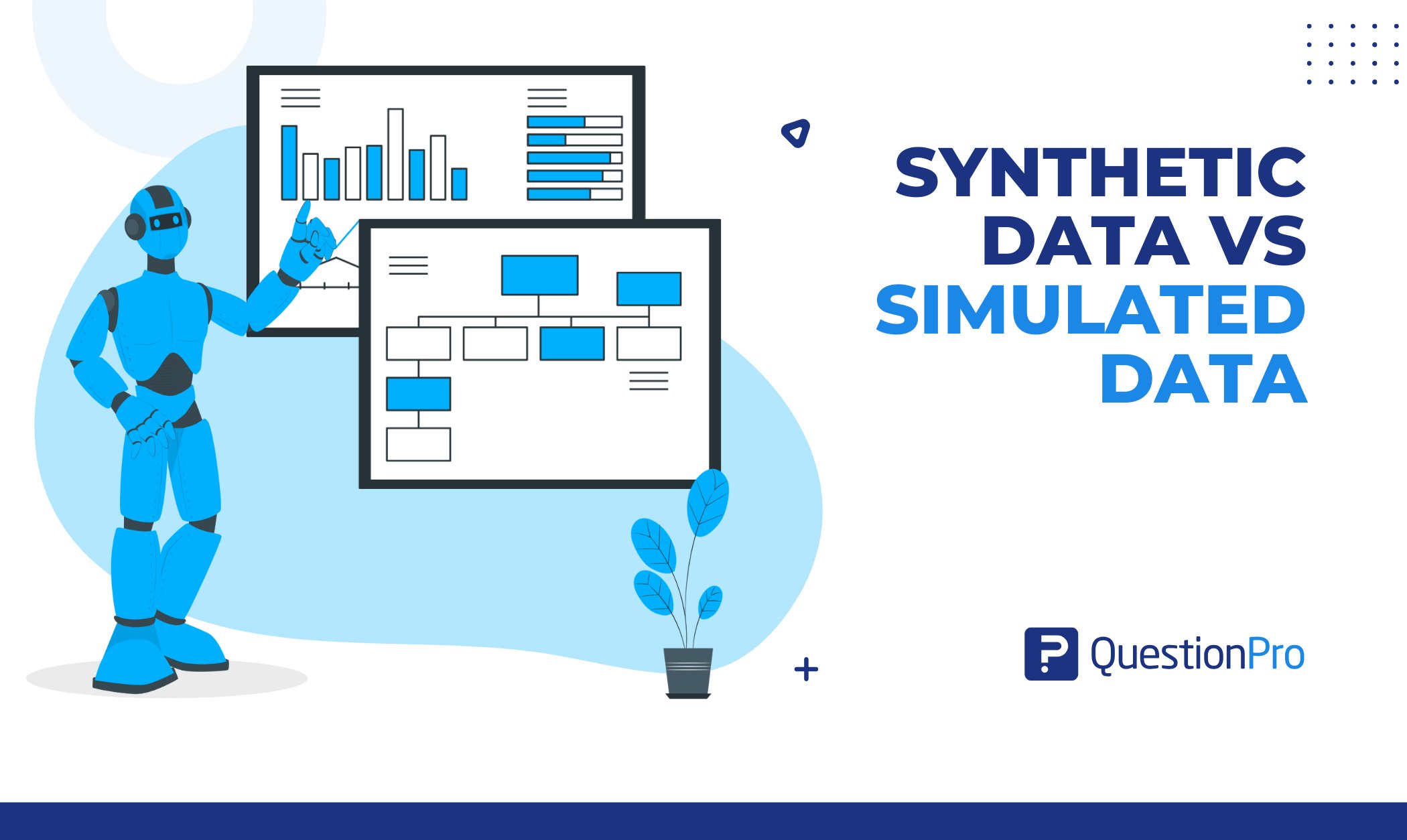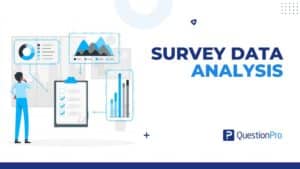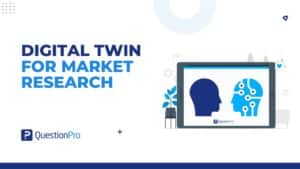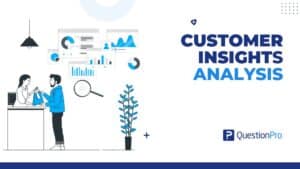
Getting the right kind of data can be tricky. What if the data you need is locked behind privacy walls or simply doesn’t exist yet? In such cases, synthetic data vs simulated data offers a smart way forward.
Both offer smart, risk-free alternatives to real-world data, helping you build, test, and innovate with confidence. But they’re not the same. Each serves a different purpose, and choosing the right one can make or break your project.
In this blog, we’ll unpack what each one means, how they work, and when you should use them.
Ready to clear the confusion?
What is Synthetic Data?
Synthetic data refers to artificially generated data that mimics the characteristics, structure, and statistical properties of real survey data. It’s often created using algorithms, machine learning models, or advanced data generation techniques.
The goal? To create a dataset that looks and behaves like real responses, without containing any actual respondent information.
Example in Surveys:
Imagine you’ve conducted a customer satisfaction survey with 10,000 participants, but you can’t share the real dataset due to privacy concerns. You use a synthetic data generation tool to create a new dataset that mirrors the trends, patterns, and distributions of the original responses. This lets you analyze or share the data safely.
Key Features of Synthetic Data:
- Generated using real data patterns or distributions
- Preserves statistical properties (means, variances, correlations)
- Contains no real respondent information
- Useful for data sharing, testing, training AI models, or ensuring compliance
Benefits of Synthetic Data
- No privacy risk because the data is artificially generated and doesn’t contain any real personal information.
- It can be customized to include rare, unusual, or edge-case scenarios that are hard to find in real datasets.
- It helps create balanced synthetic datasets in machine learning by generating equal amounts of data for different classes or categories.
- It allows safe testing of systems and applications without exposing any sensitive or confidential data.
Challenges of Synthetic Data
- Requires expertise to generate realistic and high-quality data.
- It may not capture all the subtle details of real-world behavior.
- Needs validation to ensure it reflects the real scenarios accurately.
What is Simulated Data?
Simulated data is artificially created based on theoretical models or predefined rules rather than real data patterns. It often comes from hypothetical scenarios, mathematical assumptions, or simulation models designed by researchers.
The goal here is usually to test hypotheses, run experiments, or predict outcomes before conducting the actual survey.
Example in Surveys:
You’re planning a new pricing survey. Before running it live, you simulate responses based on your assumptions, for example, that 30% of respondents will choose Option A, 50% will choose Option B, and 20% will choose Option C. You then use this simulated data to test how your survey software handles the results or how analysis dashboards display them.
Key Features of Simulated Data:
- Created from hypothetical models, not real data
- Follows predefined rules or probabilities
- Used for testing, forecasting, or experimentation
- Doesn’t aim to replicate real-world data behavior directly
Benefits of Simulated Data
- Simulated data is ideal for process modeling and forecasting because it allows you to replicate how a system behaves over time under different conditions.
- It helps test system behavior in a safe, virtual setting, making it easier to observe outcomes without affecting real-world operations.
- Simulated data can be generated when real-time experiments are costly, time-consuming, or risky, offering a practical alternative for research and testing.
Challenges of Simulated Data
- Accuracy depends heavily on the model and rules used.
- It might not reflect random real-world noise or unexpected outcomes.
- Creating a good simulation can be complex and time-consuming.
Synthetic Data vs Simulated Data: Key Differences
While both are created artificially, here’s how synthetic and simulated data compare:
| Criteria | Synthetic Data | Simulated Data |
| Source | Generated to look like real data | Comes from modeling a system or process |
| Purpose | Replace real data for privacy and ML | Understand or predict system behavior |
| Use Case | AI/ML training, testing, and anonymization | Scientific research, system simulation |
| Realism | Mimics real data patterns | Follows logical rules or formulas |
| Flexibility | Highly customizable | Limited by the accuracy of the model |
| Data Type | Tabular, image, text, etc. | Time series, numerical simulations, etc. |
Which One Should You Use?
Choosing between synthetic data and simulated data depends on your project goals, data needs, and how you plan to balance synthetic and real data while addressing privacy concerns.
- If you’re working on machine learning models, need to protect sensitive information, or want to create realistic yet artificial datasets, synthetic data is a better option. It allows you to generate data that looks real without using any actual personal or production data. It’s especially useful when data privacy laws are strict or when real data is limited or unavailable.
- On the other hand, if your goal is to understand how a system behaves under different conditions or to model real-world processes like traffic flow, financial markets, or weather patterns, then simulated data is more suitable. It lets you safely test ideas and predict outcomes based on rules, logic, or mathematical models.
In some cases, you might even use both. For example, you could simulate a scenario (like a customer journey or system failure) and then fill in the details with synthetic data to make the situation more realistic.
The best choice depends on what you’re trying to achieve, but either way, both options give you safer, flexible alternatives to using real data.
Conclusion
Synthetic data and simulated data are both powerful tools, but they serve different needs. The synthetic data generation process is best when you need a privacy-friendly version of real datasets. Simulated data helps you understand how systems behave under different conditions.
Knowing when to use it can help you build better, safer, and smarter data-driven projects without compromising privacy or performance.
So, the next time you’re stuck choosing between the two, ask yourself: “Do I need fake data that looks real or results from a real-world process simulation?” The answer will lead you to the right path.
Frequently Asked Questions (FAQs)
Answer: Synthetic data mimics real datasets using statistical models or AI—great for training ML models or protecting privacy. Simulated data, on the other hand, comes from running simulations of real-world processes (like weather or traffic) to study how systems behave over time.
Answer: Generate synthetic data when you need realistic, privacy-friendly datasets for machine learning or software testing, especially when real data is scarce or sensitive.
Answer: Absolutely. You can simulate a scenario—like a device malfunction—and then overlay synthetic data (e.g., user logs or sensor readings) to add realism. This hybrid approach gives you the best of both worlds: logical system behavior and rich, safe data.
Answer: Ask yourself: Do I need to mimic real-world data patterns (use synthetic) or model system/process behavior over time (use simulated)? If your project involves ML, privacy, or dataset balancing, synthetic data is often ideal. For forecasting or system modeling, simulated data wins.
Answer: Synthetic data is ideal for training AI models because it can mimic real-world data without privacy issues. Simulated data is more suited for testing system behavior or forecasting rather than direct AI training.







